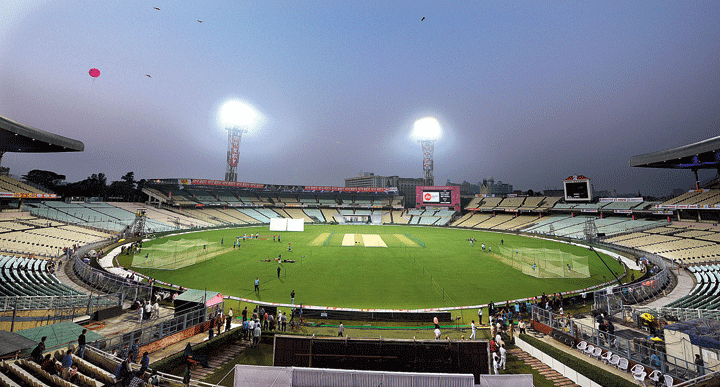The Puritan Cricketer, possibly of English ancestry, could well be turning in his grave at the Park Street cemetery. His fellow creatures of flesh and blood are, apparently, seeing red as well. For Calcutta, once the second most important city of the Empire, has fallen head over heels in love with the Day and Night Test, being played between India and Bangladesh, with — not the red cherry but — pink balls. Of course, D&N cricket is no longer a novelty. The first cricket match under floodlights — a jamboree to the puritanical eye — had taken place during Kerry Packer’s World Series Cricket, a competition that had once been haughtily dismissed as ‘pyjama cricket’. The old fogeys’ fraternity and their ancient ideas have been in full retreat on the twenty two yards ever since then. In 1979, Australia took on the West Indies in a one-day international even as the moon shone in the sky. Twenty20 cricket, a successful combination that has woven together money, entertainment and a bit of the game in an attractive tapestry, cannot be imagined in this day and age sans flood-lit stadiums chock-a-block with delirious fans. Only Test cricket held on to the sun amidst tumultuous transitions. But the final barrier — the final nail in the conservative coffin? — fell when the International Cricket Council — it has an enviable nose for innovation — sanctioned the first-ever D&N Test match four years ago in Australia, which has proved, time and again, to be fertile territory for momentous changes. India and Bangladesh, unfortunately for the stiff-upper-lip brigade, have now followed suit.
Calcutta — the city is synonymous with cricket — has obliged the D&N Test by turning pink. Some of the famous landmarks of the city — the venerable Shahid Minar is one example — seem to be in the pink of health all of a sudden. This colour code could be attributed to clever marketing. But it is not necessary to bask in the glow of India’s second Pink City to realize that the gentleman’s game has been changing for a while. The ICC had introduced a number of remarkable changes to the playing conditions two years ago, permitting, for instance, as many as six substitutes for each team during a Test, doing away with the handled-the-ball dismissal for batsmen and allowing umpires to send off players for serious misconduct. These new statutes are perhaps more serious, but less visible, registers of the new face of cricket.
Change is complementary to modernity. What is more important is that shifts are also essential for survival. It cannot be denied that waning public interest in Test cricket has necessitated experimentation among cricket’s administrators. Pink-ball cricket must be welcomed as one such experiment. Significantly, culturescapes around the world have equated the colour, pink, with the feminine aura. Men in Blue playing with pink balls in the park could well be infused with an undeniable radical charge.













